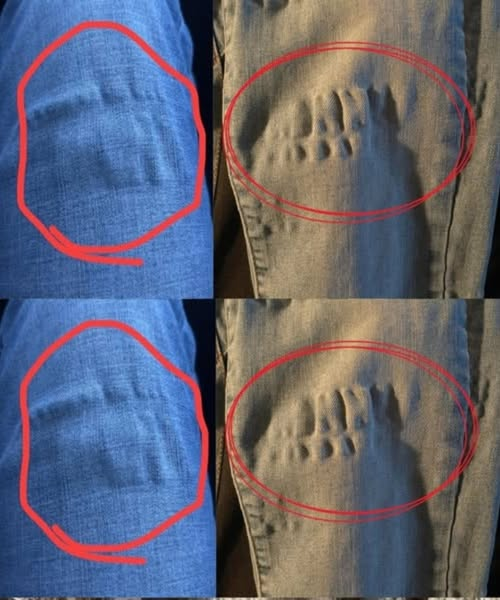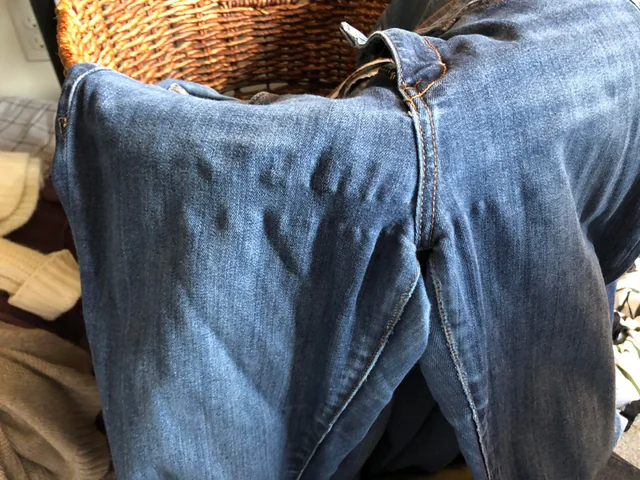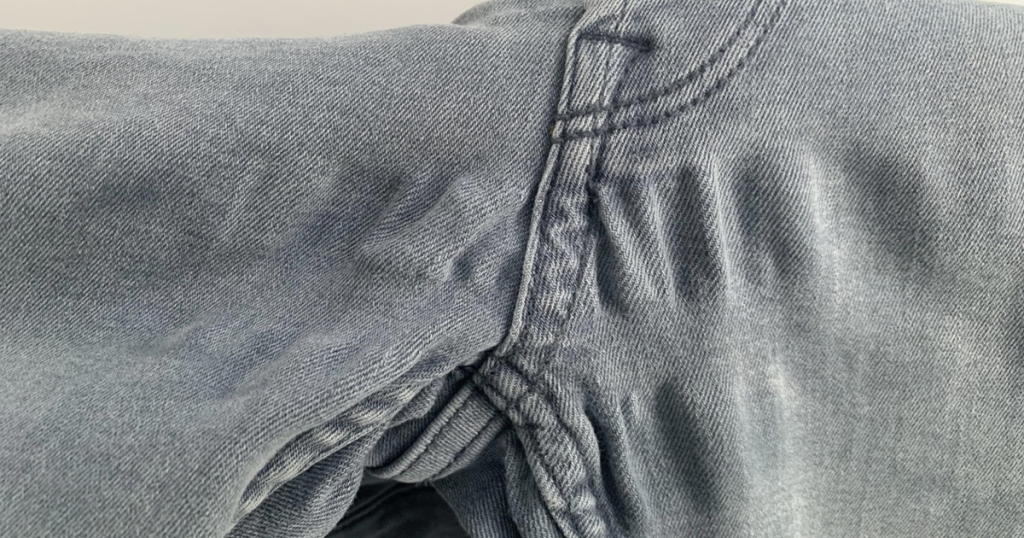We’ve all been there. You pull your favorite pair of jeans out of the wash, and suddenly, they look… off. Wavy seams. Bunched-up legs. Strange ripples that weren’t there before. What gives?
Denim is supposed to be durable, right? So why does it look like your jeans spent the spin cycle doing gymnastics? Before you toss them in frustration, let’s break down what’s really causing those weird post-wash ripples—and how to keep your denim looking sharp.

Fabric Shrinkage: The Real Troublemaker
Let’s start with the basics: denim is usually made from cotton or a cotton blend. And cotton? Well, it’s a bit dramatic. Expose it to heat and moisture, and the fibers start to shrink—sometimes unevenly.
When parts of the fabric (especially around seams or reinforced areas) tighten more than others, it leads to puckering and distortion. If you throw those jeans in a hot wash, then blast them in a high-heat dryer, you’re basically setting those ripples in stone.
Washing in cold water helps calm the cotton down. It minimizes shrinkage and helps the fabric stay relaxed. So, rule number one? Avoid hot water like the plague if you want smooth, ripple-free jeans.
Video: Fixing stretch marks on denim/ jeans
The Seams Have Secrets: Manufacturing Tension Matters
Here’s something most people don’t know—those ripples might already be “baked in” before you ever wear the jeans. Yep, the way denim is sewn can cause problems down the road.
During manufacturing, different parts of the jeans are stitched under various tension levels. If the stitching isn’t evenly distributed, some sections are basically time bombs. Once they hit the wash, they pull and shift, creating that dreaded wrinkled look.
Cheaper jeans tend to suffer more from this, but even high-end brands can fall victim—especially when stretch denim is involved.
Stretch Denim: Comfort Comes at a Cost
Speaking of stretch, let’s talk about those comfy, body-hugging jeans we all love. They usually contain elastane or spandex, which adds flexibility but also changes how the fabric behaves.
Stretch denim has a blend of natural and synthetic fibers that react differently to water and heat. Over time, the synthetic part can wear down, while the cotton tightens—hello, ripples!
If you’re a fan of stretchy jeans, look for labels that say “shape-retaining” or “engineered stretch.” These are designed to bounce back better after washing. And always—always—follow the care label.
The Overload Effect: Your Washer Isn’t a Clown Car

Another sneaky culprit? Stuffing your washing machine like you’re trying to win a prize.
Overloading the washer means your jeans can’t move freely. Instead, they twist, bunch, and rub against other clothes, which leads to uneven wear and—you guessed it—ripples.
Washing jeans in small loads gives them space to stretch and spin properly. Better movement = better results. Bonus tip: turn your jeans inside out to protect the outer surface during washing.
Dryer Drama: Why Heat Is Not Your Friend
Video: How to Wash Your Jeans – The Complete Raw Denim Guide
Let’s face it, dryers are convenient—but they’re denim’s worst enemy.
Tumble drying on high heat makes cotton fibers tighten, and once that happens, there’s no going back. Those ripples? They get set. You’re basically pressing the wrinkles in with every hot cycle.
Air drying is your best bet. Hang jeans by the waistband and let gravity help maintain their shape. If you must use a dryer, opt for low heat and pull them out while slightly damp.
And if you’re seeing stubborn ripples? A light steam or gentle ironing (inside out, low heat) can work wonders without damaging the fabric.
How to Wash Jeans Without Wrecking Them
Here’s your ripple-fighting game plan:
- Wash in cold water. It’s gentler on the fibers and prevents shrinkage.
- Use the gentle cycle. Less agitation equals fewer distortions.
- Turn them inside out. This protects both color and structure.
- Don’t overload. Let the jeans move freely.
- Avoid the dryer, or use low heat. Air drying is denim’s best friend.
And here’s the ultimate pro tip: don’t wash your jeans too often. Unless they’re stained or smelling funky, most jeans just need a quick refresh—not a full wash. Spot clean, steam, or hang them outside to air out instead.
Why Quality (And Price) Actually Matter

Not all jeans are created equal. Higher-quality denim usually means better construction, tighter weaves, and more consistent stitching. These details help reduce the chance of ripples showing up after just a few washes.
Cheap jeans? You might get lucky, but they often cut corners in stitching and fabric prep. And those shortcuts show up fast—usually in the form of twisted legs or waves along the thigh.
So if you’re tired of weird ripples and uneven seams, investing in a well-made pair might save you money in the long run.
Final Thoughts: Give Your Denim the TLC It Deserves
Ripples don’t mean your jeans are ruined—but they are trying to tell you something. From fabric behavior to washing habits and even how the jeans were made in the factory, there are a bunch of reasons why your denim doesn’t look the way it used to.
But the good news? With a little care and attention, you can prevent most of the problems before they start. Treat your jeans like the wardrobe MVPs they are, and they’ll reward you with years of comfort, style, and ripple-free wear.


